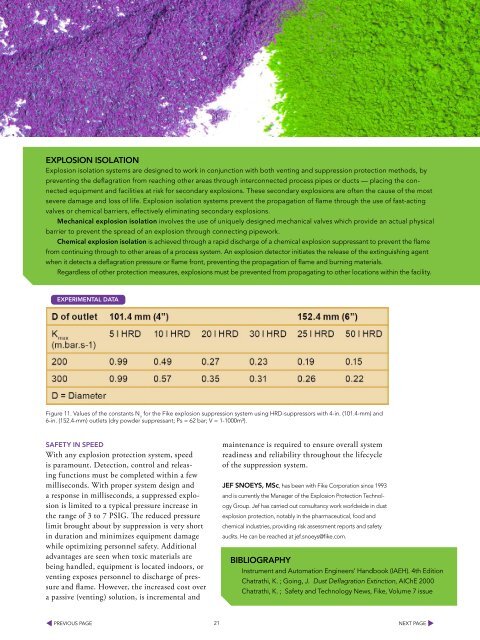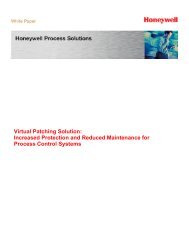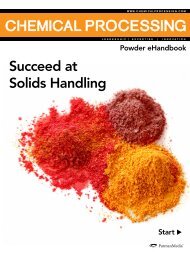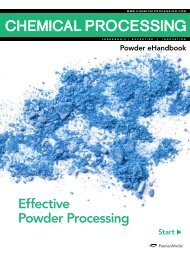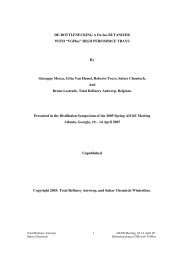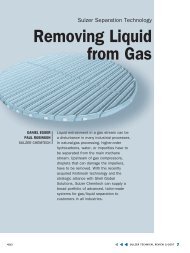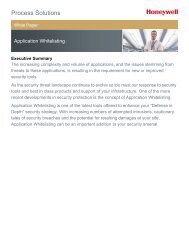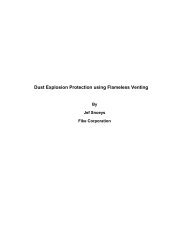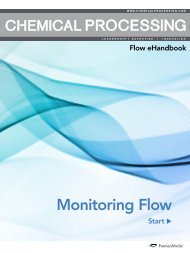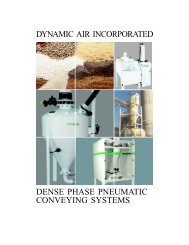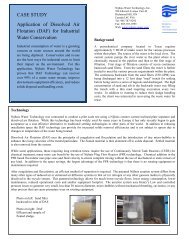Optimize Powder Processing - Chemical Processing
Optimize Powder Processing - Chemical Processing
Optimize Powder Processing - Chemical Processing
Create successful ePaper yourself
Turn your PDF publications into a flip-book with our unique Google optimized e-Paper software.
Explosion IsolationExplosion isolation systems are designed to work in conjunction with both venting and suppression protection methods, bypreventing the deflagration from reaching other areas through interconnected process pipes or ducts — placing the connectedequipment and facilities at risk for secondary explosions. These secondary explosions are often the cause of the mostsevere damage and loss of life. Explosion isolation systems prevent the propagation of flame through the use of fast-actingvalves or chemical barriers, effectively eliminating secondary explosions.Mechanical explosion isolation involves the use of uniquely designed mechanical valves which provide an actual physicalbarrier to prevent the spread of an explosion through connecting pipework.<strong>Chemical</strong> explosion isolation is achieved through a rapid discharge of a chemical explosion suppressant to prevent the flamefrom continuing through to other areas of a process system. An explosion detector initiates the release of the extinguishing agentwhen it detects a deflagration pressure or flame front, preventing the propagation of flame and burning materials.Regardless of other protection measures, explosions must be prevented from propagating to other locations within the facility.Experimental DataFigure 11. Values of the constants N ofor the Fike explosion suppression system using HRD-suppressors with 4-in. (101.4-mm) and6-in. (152.4-mm) outlets (dry powder suppressant; Ps = 62 bar; V = 1-1000m³).SAFETY IN SPEEDWith any explosion protection system, speedis paramount. Detection, control and releasingfunctions must be completed within a fewmilliseconds. With proper system design anda response in milliseconds, a suppressed explosionis limited to a typical pressure increase inthe range of 3 to 7 PSIG. The reduced pressurelimit brought about by suppression is very shortin duration and minimizes equipment damagewhile optimizing personnel safety. Additionaladvantages are seen when toxic materials arebeing handled, equipment is located indoors, orventing exposes personnel to discharge of pressureand flame. However, the increased cost overa passive (venting) solution, is incremental andmaintenance is required to ensure overall systemreadiness and reliability throughout the lifecycleof the suppression system.JEF SNOEYS, MSc, has been with Fike Corporation since 1993and is currently the Manager of the Explosion Protection TechnologyGroup. Jef has carried out consultancy work worldwide in dustexplosion protection, notably in the pharmaceutical, food andchemical industries, providing risk assessment reports and safetyaudits. He can be reached at jef.snoeys@fike.com.BibliographyInstrument and Automation Engineers’ Handbook (IAEH). 4th EditionChatrathi, K. ; Going, J. Dust Deflagration Extinction, AIChE 2000Chatrathi, K. ; Safety and Technology News, Fike, Volume 7 issue21


